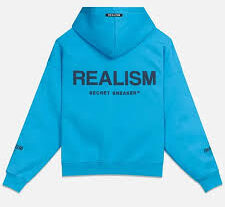In the vast galaxy of modern streetwear, where trends flicker like constellations and brands rise and fall like dying stars, one name has carved a unique path—Hellstar. More than just a clothing label, Hellstar is a creative movement that speaks in symbols, thrives on energy, and exists at the intersection of the cosmic and the chaotic. With roots in both fashion and existential thought, Hellstar has managed to disrupt the norm, fuse philosophy with design, and turn garments into statements of deeper consciousness.
This is not just another hype brand chasing virality. Hellstar is a universe unto itself—crafted through flame, shadow, and soul.
The Genesis of Hellstar: A Brand Born of Duality
Hellstar’s name alone invites curiosity. It’s a collision of two starkly opposing ideas: “Hell,” often representing torment, fire, or internal struggle; and “Star,” symbolizing light, eternity, and the vast unknown. This duality encapsulates the core of Hellstar’s philosophy. It embraces contrast—light and dark, beauty and pain, chaos and clarity. This contrast bleeds into every collection, every stitch, and every graphic.
Founded by Sean Holland, a multifaceted creative visionary, Hellstar emerged from the underground scene with a purpose beyond profit. Holland envisioned fashion as a form of spiritual and psychological expression—clothing that doesn’t just make you look good but makes you feel something. With roots in music, design, and a deep understanding of the human psyche, Holland injected Hellstar with a uniquely cerebral and rebellious spirit. The brand gained momentum by operating in a liminal space—somewhere between high-end streetwear and underground art.
Aesthetic with Intent: The Visual Identity of Hellstar
From its earliest collections, Hellstar made one thing clear: it wasn’t interested in minimalism or convention. The designs are often bold, gritty, apocalyptic, and cosmic all at once. Flames, skulls, celestial bodies, inverted crosses, broken halos, and abstract symbols form the recurring visual language. There’s a deep sense of intentional chaos in the art direction—each hoodie, tee, or sweatsuit looks like it came through a black hole with stories to tell.
This striking visual intensity is part of what makes Hellstar irresistible to a new generation that craves meaning and edge. Rather than following the cleaner aesthetics of brands like Off-White or Essentials, Hellstar leans into distortion and deconstruction. Graphics are rarely just for decoration—they convey a message, whether it’s existential, nihilistic, or spiritual. Some drops have even included cryptic statements or philosophical texts, transforming clothing into a canvas of thought.
The Flame Within: Symbolism and Meaning in Hellstar Designs
Hellstar’s most recognizable motif is the flame. But this isn’t just fire for aesthetic appeal—it symbolizes transformation, destruction, and rebirth. Fire is both creator and destroyer, and within the Hellstar context, it represents internal battles, creative power, and the burning desire to ascend through adversity.
Then there’s the recurring imagery of stars and galaxies. Unlike many brands that simply mimic outer space, Hellstar treats the cosmos as a metaphor for the soul. The stars represent destiny, the infinite possibilities of existence, and the distant yet ever-present truths of life. Combined with darker elements like skulls and shadows, these symbols convey a journey through suffering toward awakening.
It’s this balance that defines Hellstar—wearing the pain like armor while reaching for transcendence.
Culture Meets Cosmos: Hellstar’s Rise Through Music and Influence
One of the key reasons Hellstar rose so quickly in popularity is its organic link with the music world. Artists such as Lil Uzi Vert, Playboi Carti, and Future have been spotted in Hellstar gear, bringing the brand from the underground into the mainstream spotlight. But it’s not just about celebrity cosigns—it’s about alignment.
Hellstar resonates deeply with the emotional and sonic textures of modern rap, especially the genre’s darker, more experimental corners. Artists who explore themes of alienation, fame, internal demons, and spiritual exploration find a natural mirror in Hellstar’s aesthetic. The clothes complement the vibe, acting like visual extensions of the music. Whether in music videos or on stage, Hellstar becomes part of the performance—part costume, part identity.
Collaborations and capsule collections with musicians further solidified this bridge between fashion and music. Rather than selling out to big-box partnerships, Hellstar has stayed relatively selective, ensuring every collab feels authentic and spiritually aligned.
Hellstar Hoodies: The Uniform of the Unseen
Ask any Hellstar loyalist, and they’ll tell you—the Hellstar hoodie isn’t just a garment. It’s a personal declaration. With oversized fits, heavyweight fabric, and intense graphics, these hoodies have become the brand’s flagship piece. They carry the weight of the brand’s identity—comfortable yet defiant, spiritual yet street.
Each drop tends to sell out quickly, reinforcing the brand’s cult-like allure. These aren’t mass-produced items you find in department stores—they’re artifacts of a movement. Fans proudly wear them to express their alignment with the ethos of Hellstar: embracing darkness to find the light within.
Even more than their aesthetic value, Hellstar hoodies invite introspection. You’re not just wearing fire—you are the fire.
Limited Drops and Cult Appeal: The Scarcity Model Done Right
Part of Hellstar Clothing allure is its calculated scarcity. The brand rarely restocks popular items. Instead, it operates on a drop model—releasing collections in limited quantities, often with little warning. This creates urgency, exclusivity, and most importantly, authenticity. In an age where fast fashion floods the market, Hellstar moves slowly and deliberately.
This scarcity has turned Hellstar into more than just a brand—it’s become a status symbol for the spiritually and stylistically awakened. Owning a piece of Hellstar signals alignment with deeper ideas. You’re not just fashionable—you’re in the know. It’s fashion as cultural capital, but with a meaningful twist.
This model also helps Hellstar avoid overexposure. By staying selective and under the radar, it maintains mystique—an essential element in a world oversaturated with brands begging for attention.
Philosophy Woven in Thread: The Deeper Meaning Behind the Brand
What separates Hellstar from other streetwear labels is its emotional and philosophical resonance. Each collection feels like a conversation about life, death, identity, or transformation. Hellstar doesn’t just sell you a piece of clothing—it sells you a question. What does it mean to suffer? To grow? To burn? To evolve?
The brand’s core philosophy echoes themes from existentialism and Eastern spirituality. There’s an understanding that pain is part of the human condition, but also a belief in transcendence. Hellstar invites its wearers to embrace contradiction: the light inside darkness, the truth in illusion, the beauty in decay.
In this sense, the brand functions almost like a wearable journal of the soul. For many, Hellstar is more than fashion—it’s therapy in cotton and ink.
Community and Counterculture: Hellstar’s Place in the Streetwear Pantheon
Despite its selective nature, Hellstar has fostered a tight-knit and passionate community. On social media, fans trade pieces, share drop rumors, and express what the brand means to them on a personal level. This organic community-building—free from gimmicks or traditional marketing—has turned Hellstar into a subcultural phenomenon.
Unlike corporate streetwear giants that cater to everyone, Hellstar speaks directly to a specific tribe: the seekers, the wanderers, the spiritually wounded, the artists, and the alchemists. It’s a brand that celebrates the margins, the overlooked, and the misunderstood.
And in doing so, it redefines what streetwear can be. It proves that fashion doesn’t have to be hollow. It can have depth, emotion, and soul.
The Future of Hellstar: Cosmic Expansion or Eternal Flame?
As Hellstar grows, the challenge will be maintaining its authenticity while expanding its reach. So far, the brand has avoided the traps of commercial dilution. Every drop still feels curated, raw, and true to its roots. But the question remains—how does a brand built on niche appeal scale without losing its soul?
The answer may lie in evolution. Like a star collapsing into a black hole only to give birth to new galaxies, Hellstar’s future might involve new mediums—film, literature, music, or even immersive experiences. Whatever path it takes, one thing is certain: Hellstar will never be ordinary.
It will continue to burn. To provoke. To awaken.
Wearing the Inner World
In a world of fleeting fashion fads and empty aesthetics, Hellstar Tracksuit stands as a beacon of depth. It invites wearers to step into a symbolic journey—to wear their fire, their wounds, their dreams. It’s not just about looking different—it’s about being different.
Hellstar is streetwear for the soul. It’s not for everyone—and that’s exactly the point.

